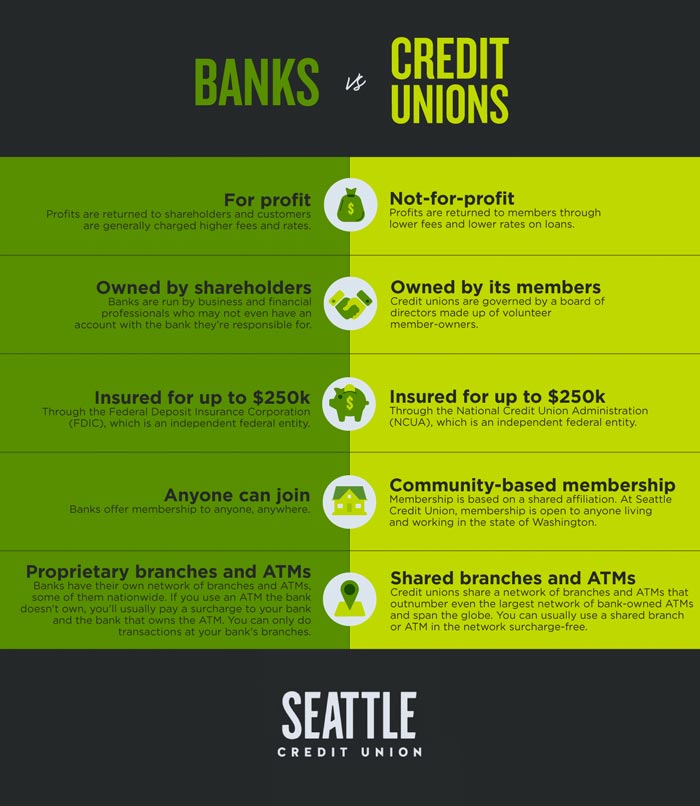Join the Activity: Why Federal Credit History Unions Issue
In the realm of monetary establishments, Federal Credit scores Unions stand out as pillars of community-focused banking, but their value expands beyond typical banking solutions. As we unwind the layers of their impact on communities and individuals alike, it comes to be apparent that Federal Credit Unions hold the secret to a more fair and flourishing economic landscape.
History of Federal Lending Institution
Considering that their creation, Federal Cooperative credit union have played a pivotal duty in the monetary landscape of the USA. When the Federal Credit Scores Union Act was signed into law by Head of state Franklin D. Roosevelt in 1934, the background of Federal Credit report Unions days back to the early 20th century. This Act was a feedback to the Great Anxiety, intending to advertise thriftiness and stop usury by providing economical debt to participants.
The Act permitted groups of individuals with a common bond, such as staff members of the very same business or members of a labor union, to form lending institution. These lending institution were developed as not-for-profit financial cooperatives, possessed and operated by their participants. The cooperative framework enabled individuals to pool their resources and give access to budget-friendly loans and various other economic solutions that might not have been offered to them via traditional financial institutions.
Over the years, Federal Lending institution have actually continued to expand in number and impact, serving countless Americans nationwide. They have actually remained committed to their beginning principles of neighborhood focus, participant possession, and economic inclusion.
Distinct Solutions Used by Lending Institution

In addition, credit unions frequently provide lower rate of interest on lendings and bank card contrasted to larger financial establishments. This can result in considerable cost savings for members, particularly for those seeking to obtain money for large acquisitions such as autos or homes. In addition, lending institution regularly give higher rates of interest on interest-bearing accounts, permitting participants to expand their money more efficiently.
One more unique solution offered by cooperative credit union is profit-sharing. As not-for-profit organizations, credit scores unions distribute their earnings back to participants in the type of rewards or decreased charges. This participating structure fosters a feeling of common possession and community amongst participants, reinforcing the concept that credit score unions exist to serve their members' finest rate of interests.
Benefits of Subscription in Lending Institution
Signing up with a credit union supplies members a host of substantial advantages that stem from the establishment's member-focused technique to economic services. Unlike conventional financial institutions, cooperative credit union are not-for-profit companies possessed and run by their members. This unique structure allows cooperative credit union to focus useful source on the most effective interests of their members over all else, causing several benefits for those who pick to join.

Area Effect of Lending Institution
Lending institution play a vital role in fostering economic stability and development within neighborhood areas through their special economic solutions design. Unlike standard financial institutions, cooperative credit union are member-owned and ran, permitting them to focus on offering the most effective interests of their participants as opposed to producing profits for shareholders. This member-centric technique converts into concrete benefits for the neighborhood at big.
One substantial means lending institution effect areas is by providing accessibility to budget-friendly economic product or services. Cheyenne Credit Unions. From low-interest finances to competitive interest-bearing accounts, cooperative credit union supply a wide variety of options that help people and local business grow. By reinvesting their revenues back into the area in the form of lower costs, higher rate of interest on down payments, and better finance terms, cooperative credit union add to the total monetary health of their participants
Moreover, credit history unions usually prioritize monetary education and outreach initiatives, equipping area participants with the knowledge and resources required to make sound economic decisions. By using financial literacy programs, workshops, and one-on-one therapy, lending institution empower people to achieve higher monetary independence and safety and security. On the whole, the area impact of lending institution goes beyond just banking solutions; it prolongs to developing stronger, much more resistant neighborhoods.
Future Growth and Trends in Lending Institution
Amidst advancing monetary landscapes and changing consumer choices, the trajectory of debt unions is poised for vibrant adjustment and advancement. As more deals move to digital platforms, credit history unions are enhancing their on the internet solutions to fulfill member expectations for ease and performance.
In addition, sustainability and social obligation are becoming crucial trends affecting the growth of credit rating unions. Participants are significantly looking for banks that align with their values, driving cooperative credit click here for more info union to integrate ecological and social efforts right into their operations (Wyoming Federal Credit Union). By focusing on sustainability methods and area advancement jobs, cooperative credit union can bring in and retain members who focus on honest financial practices

Final Thought
In final thought, government credit scores unions play a crucial function in promoting monetary security, neighborhood empowerment, and inclusivity. Through their special solutions, participant possession framework, and dedication to reinvesting in the neighborhood, cooperative credit union prioritize the well-being of their participants and add to developing more powerful communities. As they continue to adapt and expand to changing trends, lending institution will certainly stay a vital force in progressing financial self-reliance for all individuals.
The background of Federal Credit history Unions days back to the very early 20th century when the Federal Credit Rating Union Act was authorized right into law by Head of state Franklin D. Roosevelt description in 1934.The Act allowed teams of people with an usual bond, such as staff members of the same business or participants of a labor union, to create credit scores unions.Additionally, credit rating unions typically offer lower interest prices on lendings and credit history cards contrasted to bigger monetary institutions.Moreover, credit unions frequently prioritize economic education and learning and outreach efforts, equipping area participants with the understanding and resources required to make audio monetary decisions. Via their one-of-a-kind services, participant possession structure, and dedication to reinvesting in the community, credit scores unions prioritize the well-being of their members and contribute to constructing more powerful areas.